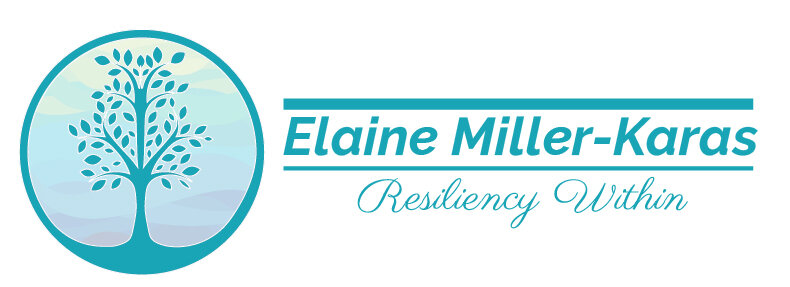Trauma Resiliency Model (TRM)
The Trauma Resiliency Model (TRM) is a biological model of intervention, designed to not only teach wellness skills to help the client regulate emotional and physical states but to also reprocess traumatic experiences. The model helps clients learn to read the sensations connected to their distress and trauma and most importantly also to their wellbeing. When clients learn to discern the difference between sensations of distress and those of wellbeing, a new avenue of choice emerges. A client can cultivate their sensory wellbeing which leads to better affect regulation and a renewed state of well being within the body.
Classes on the Trauma Resiliency Model are offered through the Trauma Resource Institute, Inc., the international nonprofit, Elaine co-founded. Michael, Sapp, PhD is now the Chief Executive Officer of the Trauma Resource Institute, Inc.
The Trauma Resiliency Model (TRM) grew out the work first conceived by Elaine Miller-Karas and Geneie Everett in 2004. Geneie and Elaine had an idea of a short-term biological model that would be accessible to health care workers and natural leaders of communities exposed to traumatic experiences. The first model they created was called Trauma First Aide (TFA).
Later, Laurie Leitch joined Elaine and in the initial days of the Trauma Resource Institute, Inc., they further developed the Trauma Resiliency Model (TRM) from Trauma First Aide. Geneie continued her work until her retirement with Trauma First Aide Associates and Laurie Leitch went out to create another model of intervention in 2011 and left the Trauma Resource Institute in 2012.
